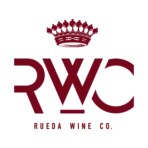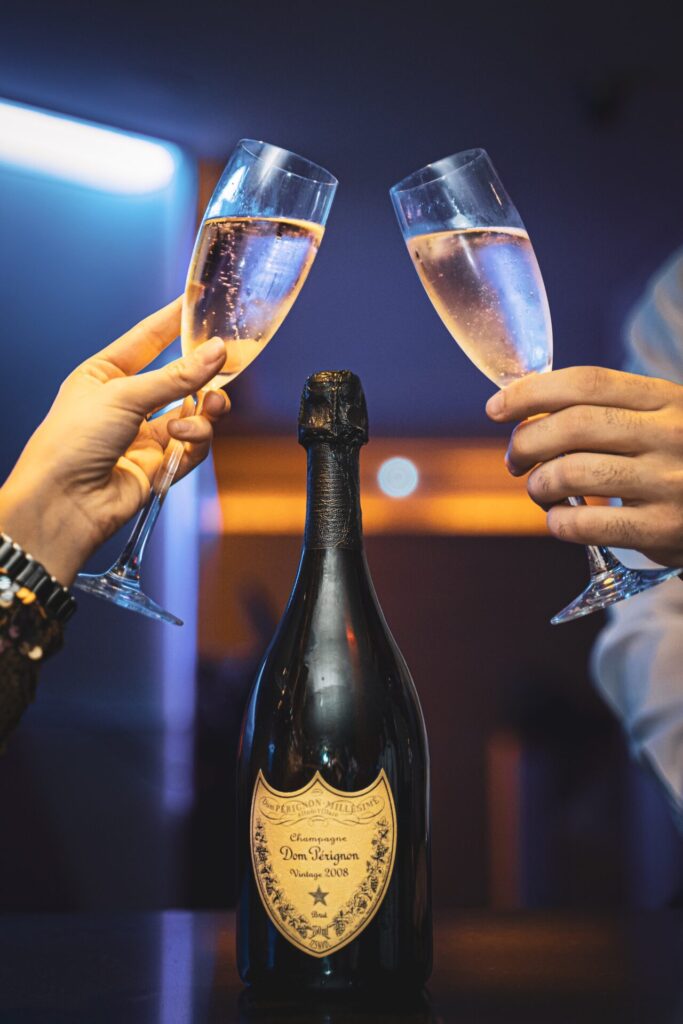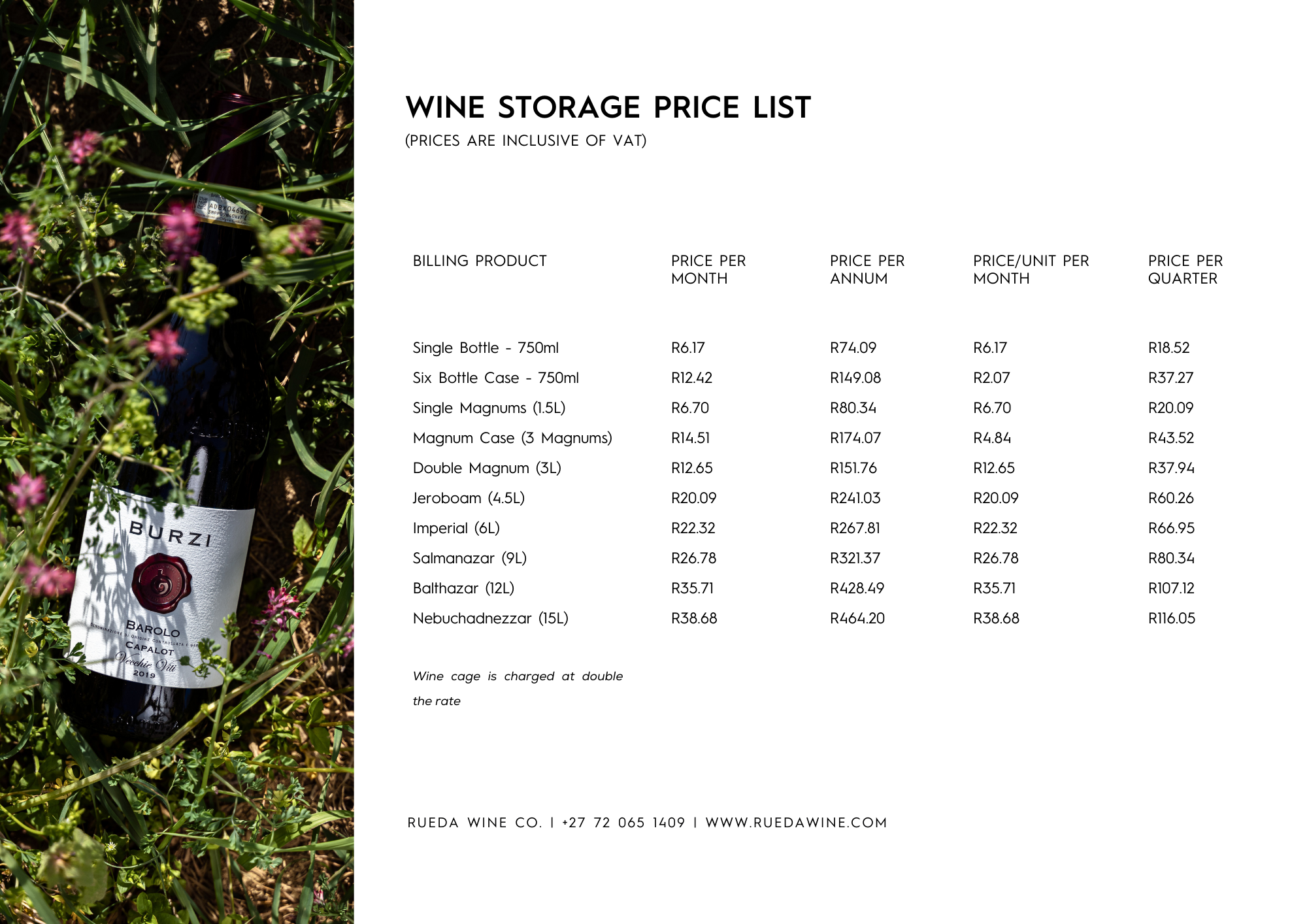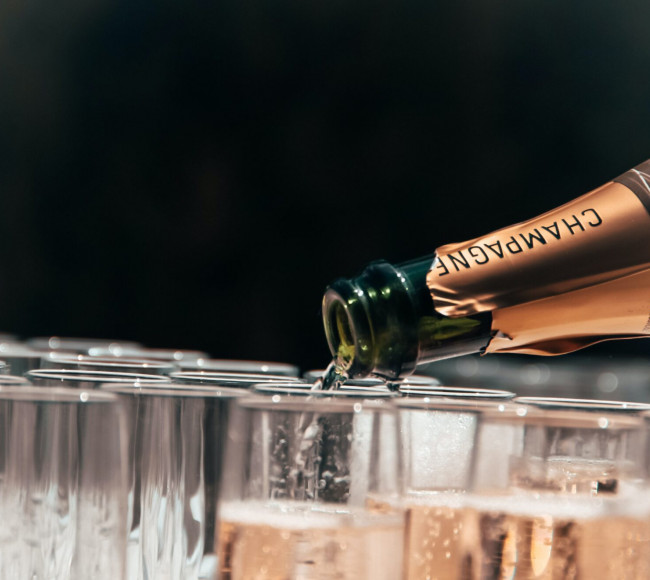
Champagne is a world-famous sparkling wine that has become synonymous with celebration, luxury, and elegance. The history dates back over a thousand years. Its production methods and styles have evolved over time to become the iconic beverage we know today.
Champagne is named after the region in which it is produced, located in north-eastern France. The production of sparkling wines in the region can be traced back to the early 17th century. Wine producers in the region noticed that their wines were undergoing secondary fermentation in the bottle. This was due to the cool temperatures and unique geology of the region, which allowed for a slow fermentation process.
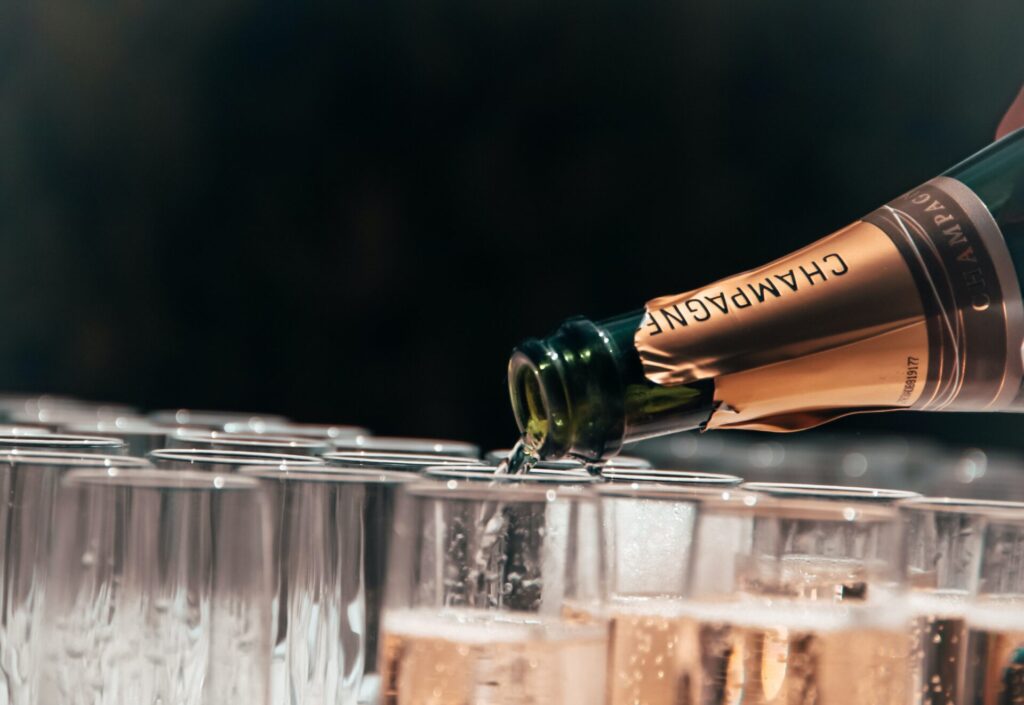
The secondary fermentation usually began once temperatures rose leading into Spring and Summer. Due to fermentation not being able to finish at the end of the previous harvesting season. The cold killed the yeasts which eat the sugar and create alcohol. Hence, once temperatures rise once more, the yeast continues to ferment the remaining sugar. The pressure (or bubbles we have all become so fond of) occurs as a by-product of fermentation. The yeast producers alcohol and carbon dioxide whilst they consume sugar.
The Region and Differences
Champagne is divided into two areas: the Cote de Blancs and the Cote de Noirs. The Cote de Blancs is known for producing the finest Chardonnay grapes. Producing the lightest and most delicate of wines. The Cote de Noirs, is known for producing the highest-quality Pinot Noir and Pinot Meunier. Used to produce bolder and more full-bodied wine.
The difference between the houses and growers in Champagne is largely a matter of scale and production methods. The large Champagne houses typically produce large quantities of wine using a blend of grapes from different vineyards and vintages. They often use modern production methods to increase efficiency and consistency. Independent growers, on the other hand, typically produce smaller quantities of wine using grapes from their own vineyards. Furthermore, they use traditional production methods that emphasise terroir and vintage variation.
The Houses
The most famous appellation is the Champagne region itself. Home to many of the world’s largest and most famous Champagne houses – Moet & Chandon, Veuve Clicquot, and Bollinger. These houses are known for producing large quantities of wine using a blend of grapes from different vineyards and vintages. These producers also use a blend of traditional and modern production methods to create their unique styles of wine.
The Growers
There are smaller, independent growers who produce Champagne using grapes from their own vineyards. These producers are known as “growers”. These growers are known for producing smaller quantities of high-quality Champagne using traditional methods. Moreover, they focus on terroir and vintage variation. The most famous growers include Rene Geoffroy, Pierre Peters, and Paul Bara.
Why Champagne Is Different
What sets Champagne apart from the rest of the world’s sparkling wines? It is a unique blend of terroir, production methods, and cultural heritage. The cool climate and chalky soil of the region provide the ideal conditions for the slow fermentation process. Furthermore, secondary fermentation in the bottle and manual riddling, ensure the flavours and character are preserved and further enhanced.
Another factor that sets Champagne apart is its strict production regulations. This is known as the Appellation d’Origine Controlee (AOC). These regulations dictate the types of grapes that can be used. The maximum yield from each vineyard. The production methods that must be followed in order to produce wine in the region. These regulations help to maintain the quality and integrity of Champagne and ensure that it remains the world’s finest sparkling wine.
Wrapping Up
Champagne is a world-famous sparkling wine with a rich history and cultural heritage that sets it apart from the rest of the world’s sparkling wines. The large Champagne houses and independent growers both play an important role in the production of Champagne. Their differences in scale and production methods result in a range of styles and flavours that cater to different tastes and preferences. Whether enjoyed on its own or as a complement to a special occasion, Champagne continues to be the most sought-after sparkling wine in the world.
Have a look on the RWC Shop or more specifically at our myriads of Champagne offers:
JOIN THE RUEDA WINE CO. COMMUNITY
